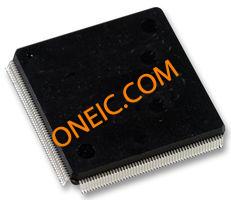EP2C5Q208I8
Cyclone II series FPGAs with 142 I/O, 208-pin PQFP for programmable logic applications
Manufacturer: altera
series introduction
# Introduction to the EP2C5Q208I8 Product Series
## 1. Overview
The EP2C5Q208I8 belongs to a specific product series that is likely part of a family of integrated circuits, specifically field - programmable gate arrays (FPGAs). FPGAs are semiconductor devices that can be configured by a customer or a designer after manufacturing. The EP2C5Q208I8 offers a unique set of features and capabilities that make it suitable for a wide range of applications in the electronics industry.
## 2. Key Specifications
### 2.1 Logic Elements
The EP2C5Q208I8 is equipped with a significant number of logic elements. Logic elements are the basic building blocks of an FPGA, used to implement combinational and sequential logic functions. With a sufficient number of these elements, designers can create complex digital circuits, such as state machines, arithmetic units, and data processing modules. This allows for the implementation of custom algorithms and functions tailored to specific application requirements.
### 2.2 Memory Resources
It has on - chip memory resources, which are crucial for storing data and instructions during the operation of the FPGA. This memory can be used for buffering data, implementing lookup tables, or storing configuration information. The availability of on - chip memory reduces the need for external memory components, thereby simplifying the overall system design and potentially reducing costs.
### 2.3 I/O Pins
The device features 208 input/output (I/O) pins. These pins serve as the interface between the FPGA and the external world. They can be configured to support various I/O standards, such as LVTTL (Low - Voltage Transistor - Transistor Logic), LVCMOS (Low - Voltage Complementary Metal - Oxide - Semiconductor), and others. This flexibility allows the EP2C5Q208I8 to communicate with a wide variety of external devices, including sensors, actuators, microcontrollers, and other integrated circuits.
### 2.4 Speed Grade
The "I8" in the product code indicates the speed grade of the FPGA. A higher speed grade generally means that the device can operate at faster clock frequencies, which is essential for applications that require high - speed data processing or real - time operation. For example, in high - speed communication systems or digital signal processing applications, a faster FPGA can handle large amounts of data in a shorter period of time.
## 3. Applications
### 3.1 Industrial Automation
In industrial automation, the EP2C5Q208I8 can be used to control and monitor various industrial processes. It can interface with sensors to collect data such as temperature, pressure, and flow rate, and then use its logic elements to process this data and make decisions. For example, it can control the operation of motors, valves, and other actuators based on the sensor readings, ensuring efficient and safe operation of industrial equipment.
### 3.2 Communication Systems
The FPGA is well - suited for communication systems, including wireless and wired communication. It can be used to implement communication protocols, such as Ethernet, USB, and Wi - Fi. The high - speed capabilities of the EP2C5Q208I8 allow it to handle the high - data - rate requirements of modern communication systems, enabling fast and reliable data transmission.
### 3.3 Digital Signal Processing
Digital signal processing (DSP) applications, such as audio and video processing, can benefit from the EP2C5Q208I8. Its logic elements can be programmed to perform complex DSP algorithms, such as filtering, compression, and decoding. This makes it possible to develop high - quality audio and video processing systems with real - time performance.
## 4. Development Tools
To facilitate the design and programming
Images for reference

208-PQFP Pkg

Image Preview
Image Preview